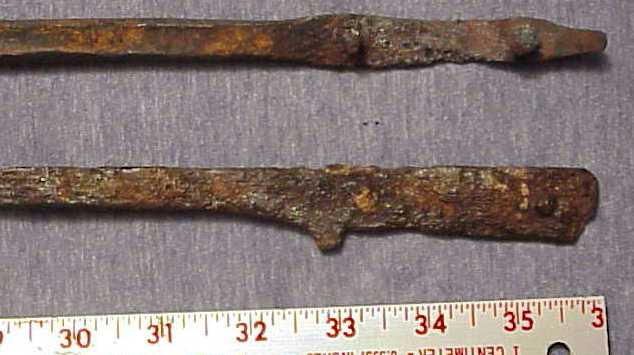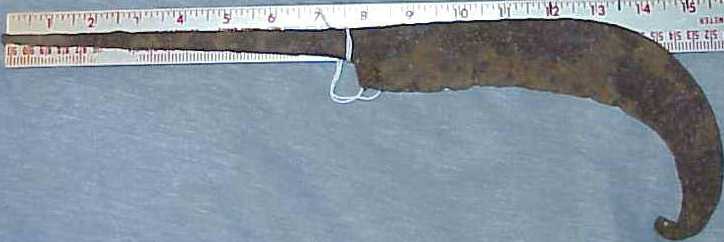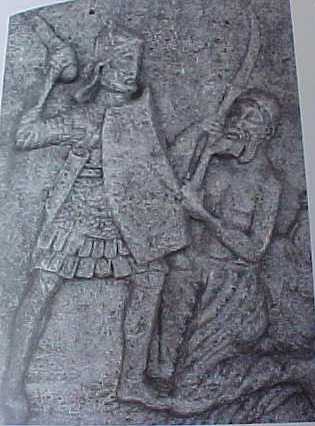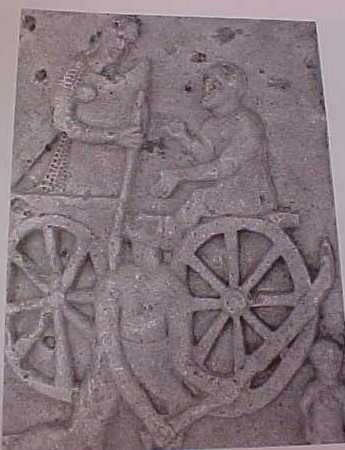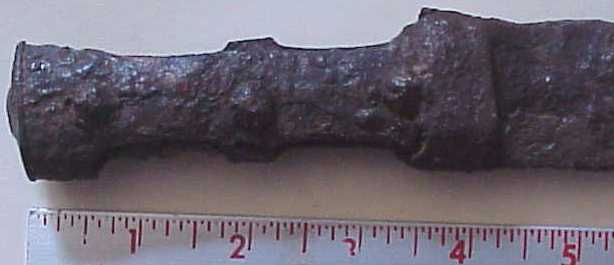I have adapted the text of this email from an email I sent to Steven Peffley who commissioned Mark Morrow to create a Falx for him to his specifications.
I have sent an email to Mark Morrow who created a Falx, asking if he would be interested in duplicating my sword. It would be an interesting project. I also have a swordsmith friend in the Southwest who is a metallurgist by trade and has published several books. He has agreed to coauthor a study, he will do the metallurgical work and I will do the historical and bibliographical. Your suggestions would be appreciated as this will become the only English language work that will actually show photographs of these swords.
The size of this sword is amazing, just trying to take pictures of it required many attempts to get it in full 65.5" perspective:
The yardstick gives some idea as to the size. This sword would indeed have to be carried like a rifle when marching, there is no way to have a scabbard for such a weapon that would be comfortable for use. The central index finger stop is quite interesting:
It gives proof that the full length of the sword shank was not encased, the 20" shank bar is quite robust and would have had just as much a smooth finish as can be seen in the finger guard area:
While both the Rhomphaia and Falx swords are meant to be wielded with two hands, in the Rhomphaia the hilt end of the sword would provide only the 4" grip with two thin .25" placques that would have been held with two rivets:
The size difference between the long one and the shorter one is striking when they are laid next to each other, note that the longer sword blade curves inward and the blade curves outward on the shorter one but the shank bars and grip are the same size to within a half inch, a strong indication that they were wielded in the same way with either size blade, note that on the shorter sword there is a finger stop at the grip, three fingers would have held the grip while the index finger would have been on the shank separated from the others by the stop:
The third piece is more problematic, it also comes from Bulgaria and I purchased it on an eBay auction, but it came with a wrong identification, I thought it was a billhook, but when it was received I thought it might be a Falx, the only way to get a feel for it would be to have it mounted with a shaft similar to the ones illustrated on Trajan's column. I described this to Mark Morrow in an email yesterday, which I will forward to you after I complete this email. Note that this piece is very robust, much more so than the Rhomphaias. It would easily take the shock of crushing a shield or severing a limb. Your comments would be appreciated:
I am copying this email to my friends on my Antiquities mailing list with an archived copy going to the AncientWeapons Yahoo Group which I moderate. Members of that group who will receive this email will have to go to the Photo archive to see the photos embedded and attached to this email, I do both because some of my friends cannot get embedded emails.
As I may have the only examples of these swords outside of the Balkans, I would like to thank my increasingly good friend Plamen Arsoff, Ancient_Treasures on eBay, for obtaining these Rhomphaia swords for me, at reasonable prices and with proper identification.
I would appreciate any additional information that any of my friends could contribute to these studies. I would like to know if anyone has an argument with any of my descriptions and inferences, especially on the possible Falx.


[ Download ]
[ Download ]
